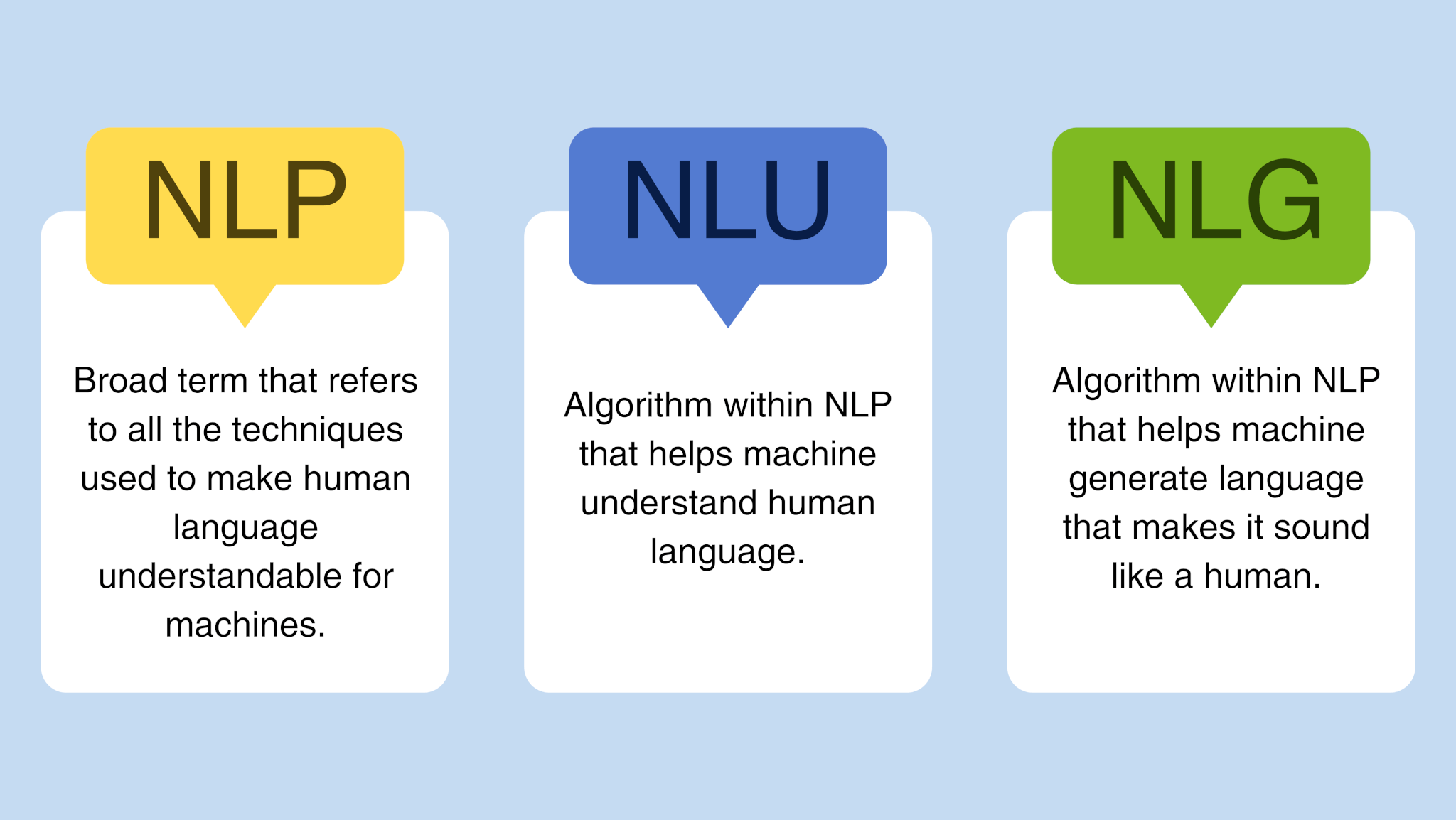Paperwork is a real mood-killer. And things get worse when extremely accurate analysis is required for very high volumes of data. Wouldn’t it be nice if there was a way to automatically get done with all this cumbersome work?
We have good news for you. There is cutting-edge technology available that can make your very boring and labour-intensive work a walk in the park. AIT Global’s Natural Language Processing (NLP) solutions have successfully helped clients save time and increase the efficiency and accuracy of their tasks that need a precise eye for analysis.
But what is NLP? And how powerful is it? Come, take a deep dive with us into the world of natural language processing.
What is NLP & how does it work?
At its core, NLP is a set of different techniques that, when applied, help your machines understand you. It makes human language understandable for machines by breaking it down into parts like words, phrases, and sentences.
NLP works by employing many different techniques, but 5 of the most common NLP techniques are:
- Sentiment Analysis: This technique works on analyzing the sentiments of a piece of text and classifying it as either positive, negative or neutral. Businesses can benefit from such analysis to gain a better understanding of their customers. Getting an insight into the general customer sentiment can help you make decisions that maintain or boost customer satisfaction.
- Stemming and Lemmatization: this duo of NLP is like a magic wand and a smart dictionary coming together to simplify and make complex things easier for the machine. Stemming reduces the word to its root form. “Reducing,” for example, will become “reduce” after stemming. Lemmatization acts like the smart dictionary in that it also takes the context into account. The combination of meaning and context helps produce the complete picture.
- Text Summarization: as its name suggests, this technique takes huge chunks of text and reduces them to meaningful summaries.
- Named Entity Recognition: again, as its name suggests, this technique is fairly straightforward. It identifies and classifies all the named entities like places, people, and organizations that your NLP algorithm has to deal with.
- Text Classification: if you love being organized all the time, then this technique will make your work life much easier. This NLP technique is used to classify texts into predefined categories like spam, not spam, positive, negative, important, unimportant, etc.
Many more NLP techniques can make your work life simpler and smoother. NLP has the potential to truly enhance every aspect of your work.
The Power of NLP Algorithms: Key Benefits

When you jump into the rabbit hole of NLP algorithms, you will find endless possibilities for inculcating it into your business. There are many benefits of relying on NLP. But the 2 key benefits that you should not miss are:
The Power Of Insights
Using NLP techniques like sentiment analysis and topic modelling can help you identify trends and gain a fair idea of how customers feel about your brand. In business, there’s nothing that comes above excellent customer service. But how can you serve your customers better if you don’t have any idea about their opinions about your brand?
Gaining insight is a very crucial part of any business growth. With NLP, you get access to powerful algorithms that help you understand your customers, competition, and even the general market sentiment in a more nuanced way.
The Power Of Automation
Time is money. Wherever you can, you should automate your business to ensure that you save your time and money. NLP gives you the power of automation with advanced algorithms.
Having virtual assistants, for example, will free up your time and human resources from the task of scheduling while increasing the efficiency and precision of scheduling. A human assistant might forget to line up the machine on time, but a virtual assistant would never.
NLP vs NLU vs NLG: What’s the Difference?

When you go hunting for NLP, there is a good chance that you may lose your way on the internet. After all, there is a plethora of knowledge available about this technology. Let us help you by giving you some quick differences between three common terms you are likely to encounter:
NLP
NLP, or Natural Language Processing, is the broad term that refers to the techniques used to make human language understandable for machines.
NLU
NLU, or Natural Language Understanding, is one of the algorithms within NLP that helps machines understand human language. For example, you can train a machine using NLU to understand that when you say “I am feeling blue,” the machine understands that you’re saying you’re sad.
NLG
NLG, or Natural Language Generation, is another algorithm within NLP that allows machines to respond like a human. It helps the machines to generate language that sounds like it was written by a human.
NLP Business Intelligence Use Cases
Business intelligence is a very broad term. And we mean that in a good way because this allows many different use cases of NLP in almost every business in every industry.
For instance, let us walk you through one of our top use cases of NLP at AIT Global. We developed NLP algorithms that would read through all ethically sourced data of the patients of mental health professionals. It would then analyze such high-volume data in much less time and provide insights that would help the professionals devise personalized care plans for each patient.
You can read the complete case study here.
The amazing part is that NLP isn’t just limited to such applications. Some other use cases of NLP also include:
- Customer feedback analysis
- Competitor activity analysis
- Market sentiment analysis
- News and media monitoring
- Fraud detection
- Content analysis
- Content management
- Technical reporting
- Compliance violations
Etc.
When it comes to the use of NLP, you’re only limited by your imagination. There are many flexible uses of this technology.
Do you want to beat the competition by adopting the cutting-edge technology of Natural Language Processing? Act now, and get in touch with us today!












 The Hidden Costs of Incorrect EDGAR Filing and XBRL Tagging – And How to Avoid Them
The Hidden Costs of Incorrect EDGAR Filing and XBRL Tagging – And How to Avoid Them  What is Agentic AI and How It’s Transforming Business Operations
What is Agentic AI and How It’s Transforming Business Operations  AI Tools For Small Businesses
AI Tools For Small Businesses  AI Examples in Everyday Life
AI Examples in Everyday Life  Use Cases of Conversational AI
Use Cases of Conversational AI 